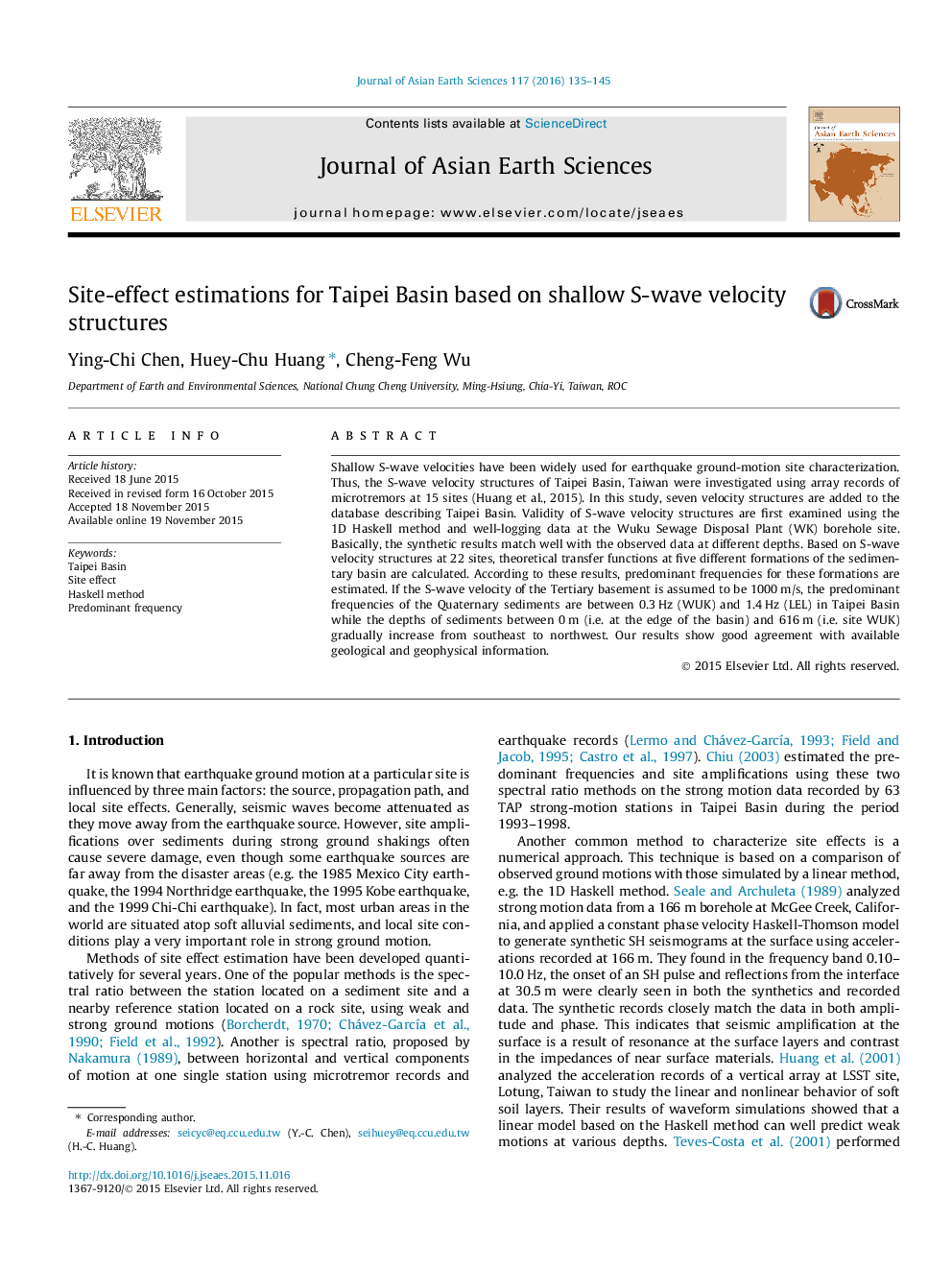| Article ID | Journal | Published Year | Pages | File Type |
|---|---|---|---|---|
| 4730180 | Journal of Asian Earth Sciences | 2016 | 11 Pages |
•Site effects for Taipei Basin are estimated using Haskell method and VS structures.•The synthetic results match well the observed data at borehole-site WK.•The predominant frequencies of sediments are about 0.3–1.4 Hz in Taipei Basin.•Our results show good agreement with geological and geophysical information.
Shallow S-wave velocities have been widely used for earthquake ground-motion site characterization. Thus, the S-wave velocity structures of Taipei Basin, Taiwan were investigated using array records of microtremors at 15 sites (Huang et al., 2015). In this study, seven velocity structures are added to the database describing Taipei Basin. Validity of S-wave velocity structures are first examined using the 1D Haskell method and well-logging data at the Wuku Sewage Disposal Plant (WK) borehole site. Basically, the synthetic results match well with the observed data at different depths. Based on S-wave velocity structures at 22 sites, theoretical transfer functions at five different formations of the sedimentary basin are calculated. According to these results, predominant frequencies for these formations are estimated. If the S-wave velocity of the Tertiary basement is assumed to be 1000 m/s, the predominant frequencies of the Quaternary sediments are between 0.3 Hz (WUK) and 1.4 Hz (LEL) in Taipei Basin while the depths of sediments between 0 m (i.e. at the edge of the basin) and 616 m (i.e. site WUK) gradually increase from southeast to northwest. Our results show good agreement with available geological and geophysical information.
